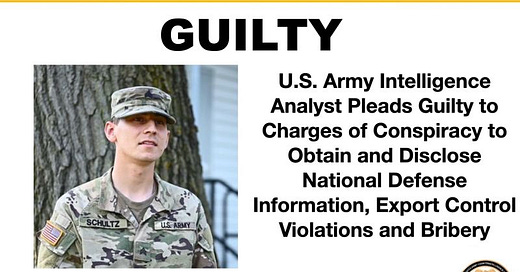The case of Sgt. Korbein Schultz is a stark and troubling example of the dangers posed by insider threats, a topic we've discussed extensively in previous posts. Schultz, an Army intelligence analyst, recently pleaded guilty to several charges, including conspiracy to obtain and disclose national defense information, exporting technical data without a license, and bribery of a public official. His actions are a sobering reminder of how devastating insider threats can be, particularly when motivated by personal gain.
Schultz used his position and access to classified information to sell sensitive U.S. military data to an individual he suspected was associated with the Chinese government. Over a period of nearly two years, Schultz transmitted details about U.S. military tactics, equipment, and strategic responses to potential conflicts in exchange for a total of $42,000. The information included deployment details related to NATO, operational manuals for military helicopters and fighter jets, and strategic insights from the Russia-Ukraine conflict applicable to a potential Chinese invasion of Taiwan.
As I have written about several times, insider threats are arguably the biggest and most difficult to resolve for any organization. The Schultz case is a reminder that no organization is immune to insider threats, and the consequences of such betrayals can be far-reaching and severe. It's crucial for both public and private sectors to remain vigilant and proactive in identifying and mitigating these risks to protect national security and organizational integrity (UPI) (Justice) (AOL.com).




